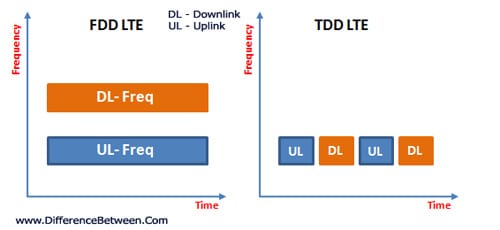On October 20th, Myanmar Posts and Telecommunications Department (PTD) will announce the winners of the 2600 MHz 4G spectrum bid.
But what does that mean? Is this precursory of important changes for the Internet market to the benefit of the end users?
Is it a game changer for Myanmar consumers?
Before answering this question, let’s look at the big picture,
It is important to understand that this is the first spectrum allocation in Myanmar since the mobile operator licensing in 2013. Mobile operators have been granted spectrum to operate their radio access network (2G and 3G) and for backhauling (>6Ghz).
Spectrum is a scarce and valuable resource in the telecom industry. Myanmar has the chance to be one of the last country to liberalize its telecom market and then is able to see how telecom has evolved in other countries and benefit from a lot of insights and existing guidelines.
The spectrum auctioned 2.6 GHz (2600MHz) is a frequency of choice for mobile and fixed broadband. It can be used for Wimax or LTE. Wimax is a bit on the decline and the predominant technology is now LTE.

LTE comes in two flavors. TDD LTE and FDD LTE. The first one is composed of a unique span that can be divided between downlink and uplink. Down / up share can be symmetric or asymmetric. That is definitely one of the main advantage of TDD LTE. Even if the growth of cloud application tend to increase the uplink usage, broadband is naturally asymmetric and TDD LTE is a perfect fit for it.
FDD LTE comes in two spans of same size. It is mainly used by mobile operators not ISPs.

The current auction is related to TDD-LTE. Two spans of 20 mhz will be allotted across 3 regions. Bidders are only allowed to bid for one lot across 2 regions. That means 6 lots to be auctioned and 3 to 6 4G auction winners.
The winners have been disclosed. What’s next?
Winners have 5 years to deploy their 4G LTE network across the regions. Winning licensees will be required to support a minimum bandwidth speed of 5 Mbps to each customer by the end of the 1st year of operation.

What is the difference with the current broadband technologies used in Myanmar?
As we discuss a few times in this blog, there are already a significant number of ISPs operating in Myanmar. They operate mainly two technologies of choice that do not necessitate any spectrum allocation for different reason.
- FTTx (FTTH – Fiber to the Home or FTTB – Fiber to the building)
Spectrum is a radio resource, therefore any wired technology does not require any…
Fortune Broadband, Elite Tech, Yatanarpon Teleport are some of the service providers that provide Internet via fiber. Fiber is definitely the best medium for broadband connectivity so what is the need for 4G LTE?
In a previous post, we compared the plans of service providers in Myanmar and the conclusion is that there is a huge barrier to entry specifically on fiber broadband as the installation costs are incredibly high.
Each fiber customer requires its own last mile. This costs represents a significant amount of money for the fiber company.
In developed countries, the installation fee is usually subsidized. The customer is asked to sign up for 1 or 2 years and the ISP recovers the installation cost on a monthly basis.
In Myanmar and it is the same in most of the emerging markets, subsidizing comes at risk. Credit collection is a challenge and the possibility of bad debt is high. Service providers are not willing to take that risk and request the customer to pay its installation fees one shot upfront. That is a huge barrier to entry. Usually between 300,000 and 500,000 MMK.
In the other hand, you can have a SIM card and a 3G plan for less than 10,000 MMK. What would you choose?
But that is not the only problem regarding fiber companies. Usually fiber means high speed, low latency, premium performance, outstanding stability and so on. For the sake of a premium broadband access, many customers would be tempted to invest in a fiber connection. But the thing is that the mentioned ISPs have bad press because of their network performance, customer service and technical support as well. The quality seems very random depending on the location, the time or the weather of the day.
If you add up uncertainty to expensive setup fee, well that is a hard sale to close. There are only a few people that will risk spending 500$ for a poor connection with no chance of refund.
For these reasons, fiber companies have not seen a huge success in Myanmar as of now. But as there was no other option available in the market, they keep getting enough customers to survive. Hopefully the new comers with 4G LTE licenses will wake up these providers from their lethargic and smug dream and push the quality up.
- WiFi Point to Multipoint (5Ghz)
Another technology of choice is WiFi. WiFi is by definition unlicensed. It means everybody can use it freely. There is still a regulation on power that if really enforced can seriously harm the current WISP (Wireless ISP) as they are pushing the power level to the maximum to operate.
As WiFi is unlicensed spectrum, it is also quite crowded. Everybody can squat the WiFi channels, jamming other networks and altering the customer experience. That is the risk with WiFi and reason why ISP are going to invest a lot of money for dedicated lanes on 2.6 Ghz.
The standard setup for WiFi is to have an outdoor antenna on the roof, directional to avoid as much as possible interference and provide a clear signal to transmit and receive data from the nearest base station.
This setup is not mobile, this setup is heavy and cost money. Even if WISP setup fees are not as high as FTTx companies, this is still an investment for the consumer with always the risk of getting an average Internet connection. The risk with WiFi is even higher than FTTx as the speed can be good today and seriously altered tomorrow as a new player will start to emit in the area causing interference on your signal. That is the game with unlicensed. Everybody can do it, create its own noise. As more players are getting into this fruitful business everyday (WiFi equipment are pretty cheap and available locally), the risk is raising that WiFi spectrum is going to be totally unusable in a few years. And PTD knows it and start warning ISPs of sanction, pushing them towards better technology such as fiber or LTE.
The only reason why WISP are currently doing better than FTTx players is that they are newer, more motivated, agile and eager to get customers. That makes them better companies to deal with. But still, it does not come without problem. There will be issues on the long run for WISP companies and their customers as the technology is not sustainable in urban areas and should be seen as a temporary solution on the way to FTTx or 4G.
So now comes LTE….
LTE is widely deployed worldwide. It is a robust and mature technology.
Prediction for Myanmar: we can foresee the installation costs to be much lower than the actual broadband offers because 4G is a technology of mass.
Mass mean LTE licensees MUST reduce the barrier to access as much as possible to trigger massive acquisition and achieve economy of scale. We forecast setup fee around 50,000 MMK maximum with plans from 20,000 to 60,000 MMK more likely volume based (volume from 30 to 150 GB per month). This is typically what is happening worldwide and may the local winners be smart enough, they will simply copy paste the winning formula.
Achieving low setup-fee on LTE is not a big deal. This is one of the good things about LTE. You don’t need to cable all the way to the customer apartment from the ground (FTTx) or from the rooftop (WiFi antenna). Buy your LTE modem at the store and bring it home. Plug it in and enjoy Internet. That should be as simple as that.
You are moving to a new flat? Just bring the 4G modem with you. If you are still within coverage, you will get the signal and connect instantly. Pretty cool isn’t it?
So what happen to the ISPs that will lose the spectrum bid? Or did not EVEN bid? Are they already dead?
Well, first, 2.6Ghz is only one 4G band. There are other frequency bands compatible with LTE. We can expect new bands (1.8Ghz 2.3Ghz, 3.5Ghz) to be auctioned in the next few years.
Let’s take a bold metaphor. Imagine that Yangon municipality has decided to create bus lanes for the main avenues and roads of Yangon. Two lanes truly dedicated to buses. These two lanes cannot be taken by taxis or individual cars but solely by buses.
But not all the bus companies can drive in there. The municipality has launched an auction and announced two companies to be the winners and sole authorized to drive on these lanes.
The other buses will continue to use the crowded and hectic lanes of Yangon.
So you have two bus companies very privileged that charge exactly the same prices as the others but enjoy right of way on dedicated lanes providing a fluid and enjoyable journey to their customers.
Which bus are you going to take to go to work for now on? That is a rhetorical question, don’t answer that.
It is more or less the same for 4G LTE. Auction winners will be given dedicated lanes to operate. It is a unique and valuable asset.
Now comes execution which is still what matters the most.
- They need to deploy a scalable and powerful 4G network.
- They need to design data plans affordable but still profitable to get the necessary cash flow for network upgrades.
- They need to build a proper customer service with modern communication channels (chat, social networks, callcenter, experience stores).
- They need to build a strong technical team, highly skilled, efficient, helpful, and reactive.
- They need to work on payment and credit collection to make it easy for everyone to signup, topup or pay your bill.
- They are also committed to provide a minimum coverage within 5 years which is also an important financial commitment.
Keep in mind that this LTE auction will cost a LOT of money to the winning operators.
Which they need to recover as fast as possible. There is only one way down this road.
- Reduce the barrier to entry
- Provide attractive data plans and excellent quality
- Attract customers and retain them
- Be the best in customer service and technical support
Winning ISPs would need to step up their game seriously. Mimic mobile operator organization that are already playing in that league, investing millions on network with fast ROI.
In conclusion, YES, this auction is important, YES, it is a game changer, YES, consumers are going to highly benefit from it. It puts a lot of pressure on the winner shoulders and we all hope they will be up to the task.
This blog has been created to watch closely this revolution and you can count on us to dissect the newly born service provider performance and point out the weak points of each of them.
Not for the sake of mocking and making bad press but to incite them to improve their service for the unique and sole benefit of the end customer.
More about the auction: PTD Framework for 2600MHz Spectrum Auction
Herbert is a nom de plume.
I am an experienced telecom professional blogging about the fastest growing Internet market in the world: Myanmar.




